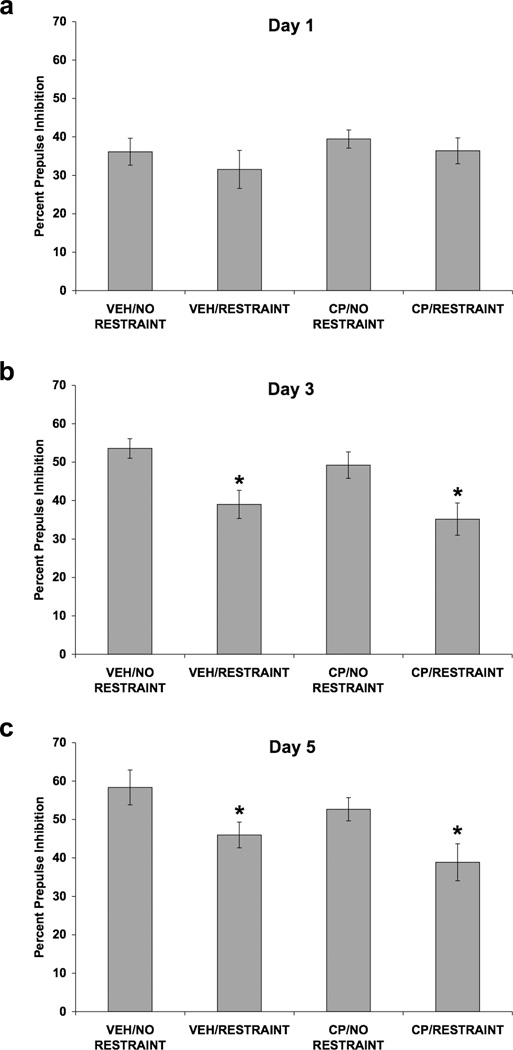Fig. 3.
Effect of restraint stress and selective CRF1 receptor blockade on PPI. Values shown are mean ± SEMs. For all groups, n = 10. The average of all prepulse stimulus intensities (76, 82, 85, and 88 dB) is shown as Percent Prepulse Inhibition. X-axis shows Pretreatment (SC injection)/Treatment (absence or presence of restraint). Rats were administered a SC injection of CP-154,526 (20.0 mg/kg) or vehicle. Forty-five minutes later, rats were restrained for 2 hours or were handled briefly and returned to the home cage. Rats were subjected to injection and restraint (or brief handling) once a day for 5 consecutive days. Rats were tested for PPI 30 minutes after restraint termination on days 1, 3, and 5. (a) On day 1, neither pretreatment with CP-154,526 nor restraint altered PPI. (b) On day 3, restraint attenuated the decrease in PPI caused by repeated testing (*p < 0.001 vs. No Restraint, main effect). CP-154,526 pretreatment did not alter the effect of restraint on PPI. (c) On day 5, restraint attenuated the increase in PPI caused by repeated testing (*p < 0.01 vs. No Restraint, main effect). CP-154,526 pretreatment did not alter the effect of restraint on PPI.

